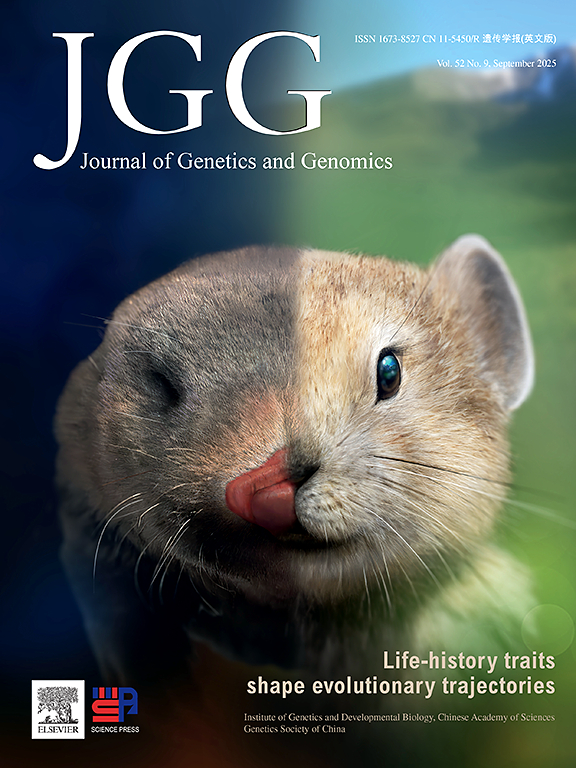2012, 39(2): 103-110.
doi: 10.1016/j.jgg.2011.11.008
Abstract:
Thinopyrum elongatum (2n=2x=14, EE), a wild relative of wheat, has been suggested as a potentially novel source of resistance to several major wheat diseases including Fusarium Head Blight (FHB). In this study, a series of wheat (cv. Chinese Spring, CS) substitution and ditelosomic lines, including Th. elongatum additions, were assessed for Type II resistance to FHB. Results indicated that the lines containing chromosome 7E of Th. elongatum gave a high level of resistance to FHB, wherein the infection did not spread beyond the inoculated floret. Furthermore, it was determined that the novel resistance gene(s) of 7E was located on the short-arm (7ES) based on sharp difference in FHB resistance between the two 7E ditelosomic lines for each arm. On the other hand, Th. elongatum chromosomes 5E and 6E likely contain gene(s) for susceptibility to FHB because the disease spreads rapidly within the inoculated spikes of these lines. Genomic in situ hybridization (GISH) analysis revealed that the alien chromosomes in the addition and substitution lines were intact, and the lines did not contain discernible genomic aberrations. GISH and multicolor-GISH analyses were further performed on three translocation lines that also showed high levels of resistance to FHB. Lines TA3499 and TA3695 were shown to contain one pair of wheat–Th. elongatum translocated chromosomes involving fragments of 7D plus a segment of the 7E, while line TA3493 was found to contain one pair of wheat–Th. elongatum translocated chromosomes involving the D- and A-genome chromosomes of wheat. Thus, this study has established that the short-arm of chromosome 7E of Th. elongatum harbors gene(s) highly resistant to the spreading of FHB, and chromatin of 7E introgressed into wheat chromosomes largely retained the resistance, implicating the feasibility of using these lines as novel material for breeding FHB-resistant wheat cultivars.







